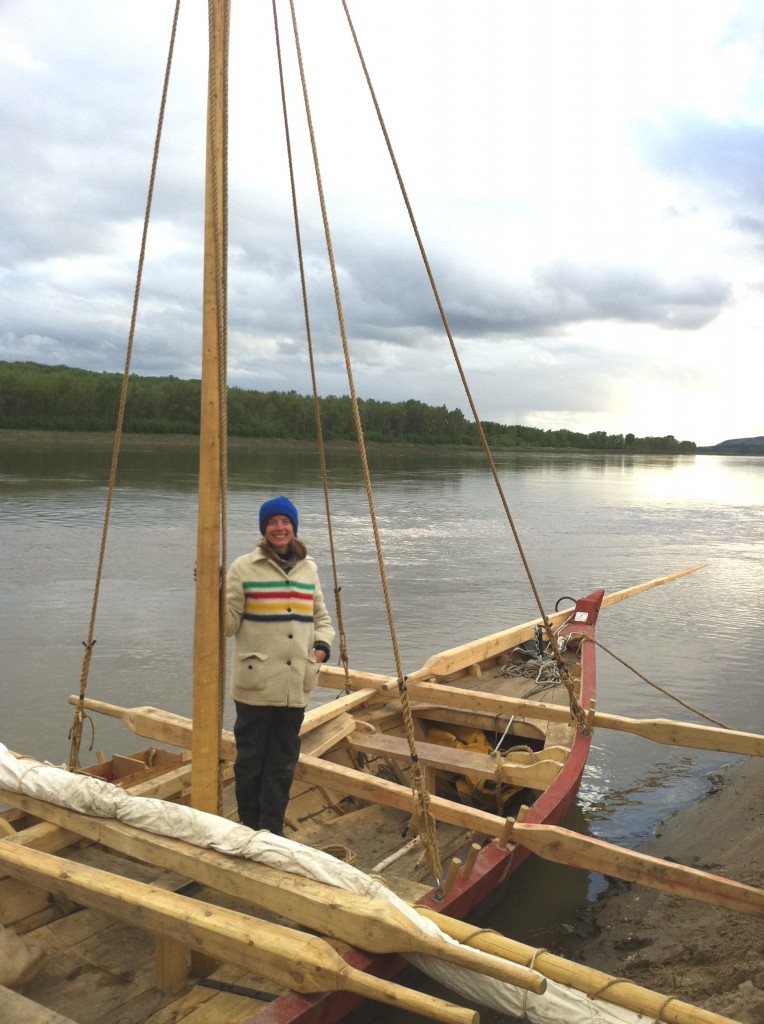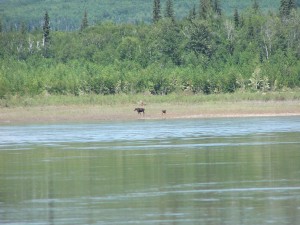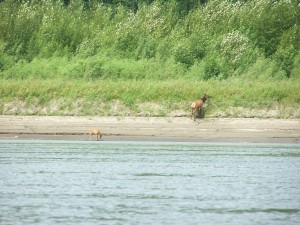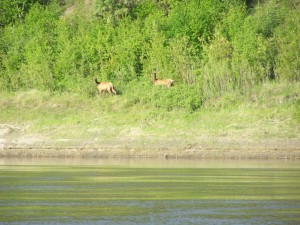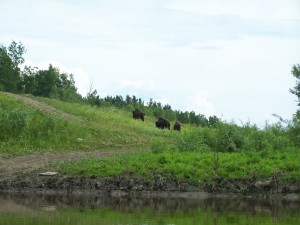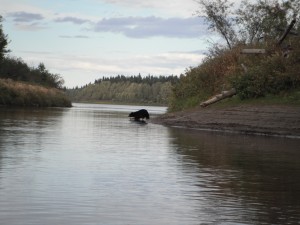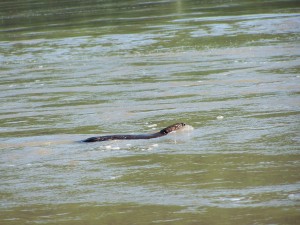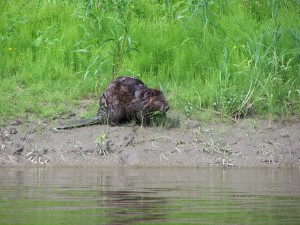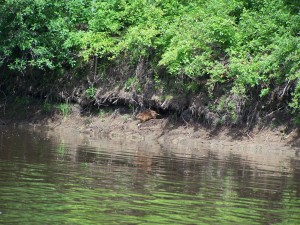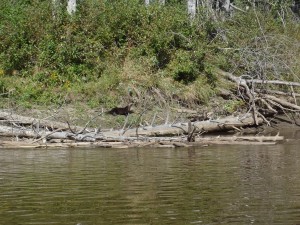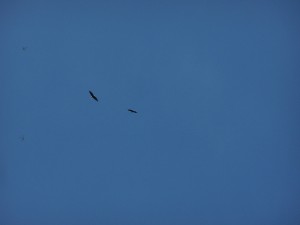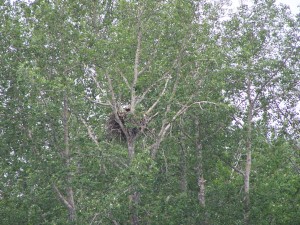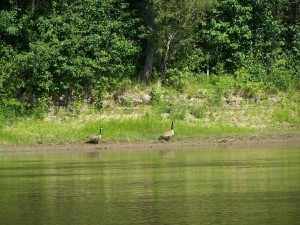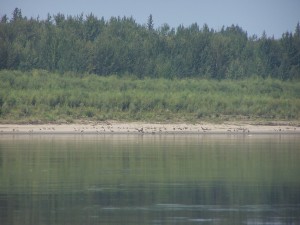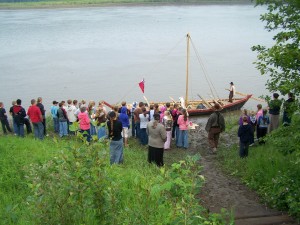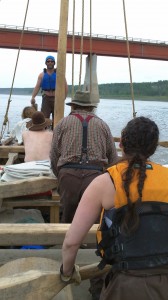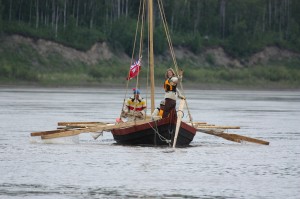You can expect the Peace River to be running unusually high this year. You can thank BC Hydro for releasing water from the Williston Reservoir, due to higher than normal snow melt in the mountains and rainfall in BC. You can read the original press release below, and check out those numbers! Those are some serious water flows. With the river running high, be extra careful when you get in or out of your boat, make sure you camp nice and high off the water, and as always, respect the river.
Here is the latest river level chart for the Peace River at the town of Peace River.

You can check the latest river levels and other important current info on our Current Conditions page.
The following is from BC Hydro’s Press Release:
Spill scheduled at W.A.C. Bennett and Peace Canyon Dams
June 29th, 2012
June 25, 2012
Hudson’s Hope – The first prolonged release of water in a decade is scheduled to start Tuesday, June 26 from the W.A.C. Bennett Dam and Peace Canyon Dam near Hudson’s Hope. The two facilities will continue to generate power during this time.
The spill may continue, uninterrupted, until mid-August, dependent upon inflows into Williston Reservoir. BC Hydro’s Peace River facilities are designed to spill; it is considered to be a normal operation during the infrequent periods of excess inflows and water supply.
By spilling earlier, before Williston Reservoir is full, BC Hydro can release a smaller volume of water, minimizing the likelihood of a larger spill later on in the season. A spill of this size is not expected to cause flooding. Communities downstream of Peace Canyon Dam have been notified and should the spill operation change, BC Hydro will continue to keep communities informed. A similar spill was last observed in 2002.
The spill is a result of BC Hydro’s need to manage high system reservoir levels brought on by higher than average snowpacks and recent rainfall throughout the B.C. Interior. The inflow forecast for Williston is currently 125 per cent of normal for the remaining runoff season.
BC Hydro is expected to spill between 570 and 1,415 cubic metres per second (m³/s), (20,000 to 50,000 cubic feet per second) of water at both dams. Including the water used by the generating units, total discharge downstream of Peace Canyon Dam is expected to be between 2,150 and 3,000 m3/s (75,000 and 105,000 cfs). By comparison, the maximum normal discharge from Peace Canyon Dam is 1,982 m3/s.
BC Hydro may change the total downstream discharge, or end the spill without notice. For everyone’s safety, the public is reminded that they must stay well away from the spillway structures of either facility and may not stop on the W.A.C. Bennett Dam crest road to view the spill. Safe locations for public viewing of the spills are at the W.A.C. Bennett Dam Visitor Centre, or the Peace Canyon Dam Visitor Centre. Both facilities are open daily except Tuesdays through the Labour Day weekend.
Original post located at:
http://www.el.bchydro.com/mediabulletins/bulletin/system_facilities/spill_scheduled_at_wac_bennett_and_peace_canyon_dams
Another successful York Boat trip is concluded! I am so pleased to have been a part of it again this year, and once again, it was a fantastic experience. Rowing is such a nice way to travel the Peace River and sailing is even better! Pictures to come!
If you are interested in participating in a York boat trip, you’re in luck! There are still two spots available on a three-day trip in July. Although much shorter than the one we just completed, I am sure it will prove to be a once-in-a-lifetime experience. Contact Jason at GeoTourism Canada for more details. Act now to get one of those last spots!
Canoe Lessons for Adults: Flow North will be offering some adult canoe lessons through Chinchaga Adult Learning. So far, we have a full day of lessons planned for Saturday, July 28. Lessons will run from 9:30 am – 4:00 pm and cost $50 per person. Call 780-926-5625 to sign up!
Canoe Camp for Kids: In partnership with the town of High Level, we are once again offering a two-day Canoe Camp for kids aged 10 – 15. It is a day camp (kids go home at the end of the day) which takes place at Footner Lake, with all transportation provided. Contact the town at 780-926-2201 to sign your child up for this camp. There are limited spots, so call soon!
Trips this summer: Many people ask us what trips we have planned this summer! Well, we don’t operate like other outfitters – we don’t schedule a bunch of trips and then make you plan your schedule around us. If you want to go on a trip and you have a group of 4 or more people, give us a call and we’ll talk about what you have in mind! If you have a group that is interested in just going for a day, you can also have a Canoe Party.
The York boat expedition for 2012 is underway! Flow North is not as fully-involved as last year, but we are still very excited to see the boat in the water. GeoTourism Canada is recreating the expedition we did last year, from Fort Dunvegan to Fort Vermilion, on the Peace River. And I, Teresa (Flow North’s owner/operator) will be on it!
Because of a canoe camp we did for the Dr. Mary Jackson School from Keg River a few days ago, I couldn’t do the whole trip, but I am joining them at Notikewin Provincial Park for the second half of the trip.
This is a wonderful, unique boat! So, if you would like to come see it and chat with the crew, here are your options:
– Notikewin Provincial Park today (June 8) or tomorrow (June 9) morning
– Tompkins Landing/La Crete Ferry Campground on Monday, June 11 (aprx 3 pm on)
– Wall’s Landing on June 12, afternoon/evening (ask someone from LaCrete for directions)
– Fort Vermilion on Friday, June 15, afternoon
Sorry we can’t give more exact times for our arrivals, but it’s hard to say exactly when we will arrive and I hate to promise something we can’t deliver on.
Hope to see you there!
Note: Contact us if you are interested in having a Canoe camp (2 days of canoe lessons) for a group you lead. We are also doing some adult canoe education, open to the public: Sat, July 28 near High Level and Sat, Aug 18 in conjunction with Paddle the Peace in Peace River, AB.
– – – Part 3 in the Survival Gear Series – – –
Referring to our safety and survival gear list, let’s have a look at these two items:
– survival rations or protein bars
– extra water purification tablets
Let’s jump down to the food and water components: “survival rations or protein bars.” Basically, you should have food with you to provide needed calories while you wait to be found or facilitate your own rescue in some other way (such as walk out). Good survival food
– keeps for a long time
– provides lots of calories
– doesn’t take up too much space
– doesn’t create a lot of garbage (a good principal for all food for trips)
– isn’t overly smelly
This last one might not be obvious, but around here, if you were stuck in the bush overnight and cracked open a can of tuna or sardines to snack on, you’d likely become a snack for the wolves (or in summer, the bears)! Take something that isn’t quite so appealing to the wildlife. A good source of calories, although not particularly tasty, is bacon grease or butter. After all, the Voyageurs lived on pemmican, which is 50% fat and 50% dried meat and berries (when they didn’t have fresh meat or berries to eat).
As for water, it is very important not to become dehydrated while waiting for help to arrive. If you’re on a canoe or kayak trip, there’s bound to be water nearby, but do not drink untreated water from anywhere beavers or ducks swim. Beaver fever, properly known as giardia, is very serious — it will feel like the worst flu you’ve ever had. There is a slight risk of salmonella from water ducks swim in. For these reasons, make sure to bring some water treatment capsules in a waterproof container with you. We like Aquatabs) from MEC. They are super-easy to use. Simply add one tablet to a 1-litre water bottle (double it for particularly dirty/cloudy water) and let it sit for a half hour. If you have a mechanical water filter, it must be rated down to one micron in size and be properly maintained. You can also boil water to kill giardia — one minute of a full, rolling boil (2 minutes at altitudes above 2,000 m) — and then let the water cool.
Download our free Comprehensive Trip Packing List.
– – – Part 2 in the Survival Gear Series – – –
Referring to our safety and survival gear list:
– first aid kit
– extra band-aids
– first aid book
– signaling mirror
– matches in waterproof container
– fire starter sticks
– survival rations or protein bars
– extra water purification tablets
– reflective emergency blanket
– packet of salt
– cutting wire, pocket chainsaw, or folding survival saw
– multi-tool
– small bug spray bottle
Let’s look at the fifth and sixth items on that list: “matches in a waterproof container” and “fire starter sticks.” Basically, what you need to bring is some reliable method for starting a fire — creating a spark or flame — in a variety of conditions. Although starting a fire is not the first priority in survival situations — first is making or finding shelter — it is very high on the list of priorities. (You need to determine where your shelter will be before making a fire near it.) Fire can bring needed warmth, help you dry out wet clothing, help to signal search-and-rescue aircraft, keep wildlife away, and provide mental comfort as well.
Matches are one standard way of making fire, but there are other options:
– a lighter in a waterproof container (make sure it is full)
– strike-anywhere matches in a waterproof container
– flint and knife
– magnesium bar, flint and knife
Whatever method you use, make sure you are familiar with its function. Many waterproof matches will only work when struck against a special material that is on the side of the box — if you take the matches out to put them in a waterproof container, make sure you put a few pieces of the box material in as well. A bar of magnesium may seem like a good idea, since magnesium burns hot and bright, but if it takes half an hour to shave enough of it to start a fire, you could get awfully cold in that time if you are wet.
Once you have a spark or small flame, the next crucial step is getting the flame to keep burning. Obviously, you are going to look for tinder — anything fine and dry in the environment around you — but if tinder is hard to find, it is ideal to bring some with you. Dryer lint burns very easily, and if soaked in petroleum jelly, it will burn for longer. Some people swear by steel wool. Birch bark is nature’s tinder, so gather small pieces in areas where it is abundant — ALWAYS from the ground, not from living trees. In an area with evergreens, the small, dry twigs that grow on the trunk will stay dry in even the heaviest rain. This is also a great place to make a shelter — just prop up some additional wood, boughs or a tarp on the windy side.
Rather than reinvent the wheel, we refer you to another of “Cryptic Cricket’s” videos, this one on magnesium fire starters.
Using a Magnesium Fire Starter and Steel
The next survival article will be on food and water, so stay tuned.
Download our free Comprehensive Trip Packing List.
Survival gear is essential for a multi-day outing, but it is only as good as the brains behind it. That is to say, if you don’t know how to use the gear you’ve bought, it might as well be play-doh.
From our Comprehensive Trip Packing List, here is a suggested list of safety and survival gear:
– first aid kit
– extra band-aids
– first aid book
– signaling mirror
– matches in waterproof container
– fire starter sticks
– survival rations or protein bars
– extra water purification tablets
– reflective emergency blanket
– packet of salt
– cutting wire, pocket chainsaw, or folding survival saw
– multi-tool
– small bug spray bottle
(Please see the whole list for the big picture of what to pack.)
Some items are pretty straightforward, like the extra band-aids, but take a closer look and you may realize that you don’t know how to use all the gear. Could you quickly look up what do to for a sprained ankle in your first aid book? Do you know how to use a signaling mirror? Do those waterproof matches need a special strike material?
Even simple-to-use items like fire starter sticks have best techniques for use. Take some time this winter or spring to try out every piece of survival equipment you have. Make sure you can easily use each one; you may discover short-cuts or tricks for the best or easiest way to use your gear. You may also want to try magnesium instead of matches or a custom fire starting material instead of the store-bought kind. The key is to do this in a non-emergency environment and get really good at using your gear so that in a survival situation, it’s that much easier to keep your cool.
Over the next few weeks, we’ll be expanding on this survival list, giving you some tips and suggestions on what to keep in mind when choosing gear and how to use it. For now, we refer you to a great video on how to use a signaling mirror.
Using a Signaling Mirror
Mark your calendars! June 29 – July 2 is the Alberta Paddling Symposium!
For all things paddling, plan to go to the Paddling Symposium in Rocky Mountain House this year! There will be clinics on all aspects of canoeing, kayaking and even a chance to try stand-up paddle (SUP) boarding. It sounds like a ton of fun and the organizers have some really great activities in mind. It’s quite affordable too!
Please see the Paddle Alberta site for more information.
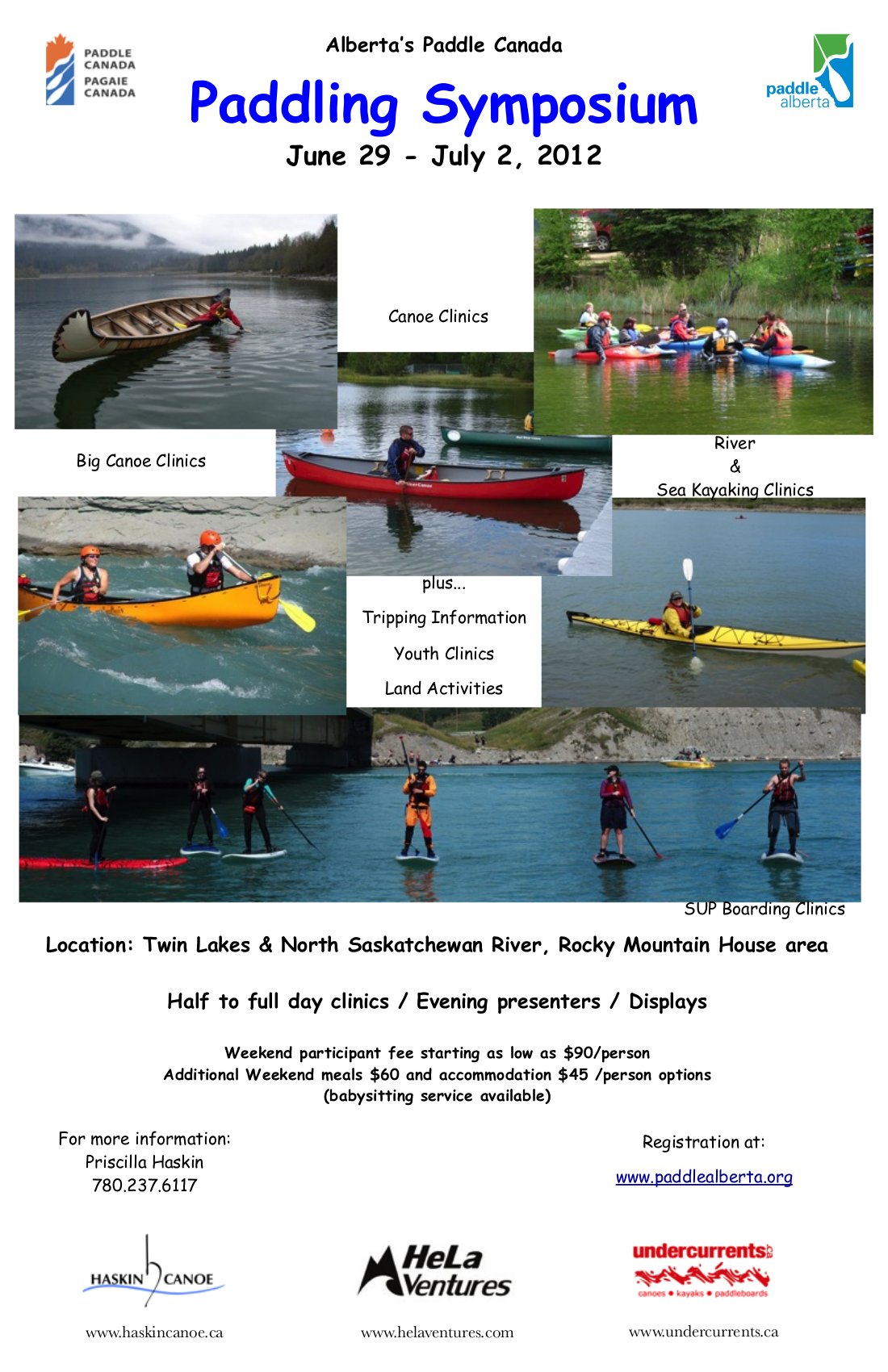
We thought we’d treat you to the best wildlife photos of the summer! You can expect to see all of these animals along the rivers we paddle in northwestern Alberta (click on any photo for a full-size version):
MooseElk |
Buffalo (Bison)Black Bears |
||
BeaversOtters |
Bald EaglesCanada Geese |
Just a few notes: The buffalo are only seen along parts of the Hay River — all other animals are fairly common along the Hay, Peace, or Chinchaga Rivers. Throughout the summer, we also saw other types of eagles, many ducks, Sandhill Cranes, and deer (mule and white tails). Also FYI, all the photos were taken on our various trips last summer (2011), except the first Elk photo and the second Canada Goose photo which were taken in 2010. Looking forward to this summer!
Last June, we ran the York Boat expedition on behalf of GeoTourism Canada. We still have hundreds of pictures we haven’t shown, so we thought we’d post a few more!
The last photo is courtesy of James Tupper.
Remember way, waaaaay back, when it was summer? 🙂 Well, we did an unprecedented York Boat expedition on the Peace River — 538 km, 18 days, one big wooden boat — and as a result, we had a lot of interest from people throughout Alberta. A group called Corner 24 Media made a promotional video about the northern Peace Region and, of course, featured the York Boat. Have a look!
